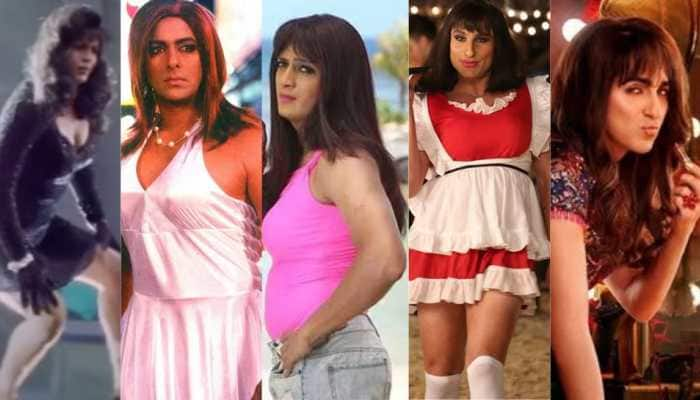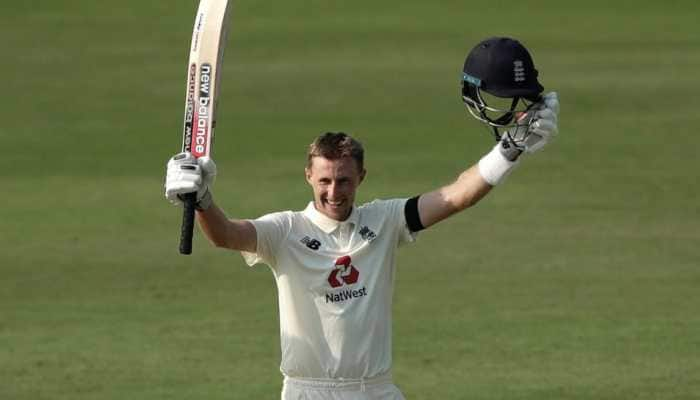The use of images and Murti Puja in the Vedas
Everything we see is a manifestation of this Divine Vedic speech and reflects its secrets.
Trending Photos
)
The Rigveda is the most ancient teaching of the Hindus, its Śruti or revelation, dating back five thousand years or more. The text consists of the mantric hymns of the Vedic Rishis.
These Vedic hymns are highly poetic and imagistic, lauding the Divine powers or Devas in the forces of nature from Sun, Moon, Fire and Waters, to human relations of various types starting with mother and father, with the bull and cow as the most sacred animals. The main type of Vedic worship is the yajna or sacred fire, which has a multileveled symbolism.
The question arises whether there was any formal image worship or murti puja as part of the Vedic worship to go along with these poetic images. Some groups have insisted that there was not, quoting Vedic verses like na tasya pratimā asti from the Yajurveda, that, "the Divine has no form or representational image". Yet, I would suggest otherwise.
Manu's view of images in the Rigveda
Let us begin with two hymns of Manu Vivasvan, the legendary seer at the origin of the Vedic teachings. The numerous Devas of the Rigveda have various forms, appearances and weapons.
"The thirty three Devas who sit on the sacred grass. They are our guardians from the west, north, south and east for all peoples. In groups of seven they carry seven spears, have seven lights and seven splendours." Rigveda XXVIII 1-5.
Here the deities are invited to sit on the sacred grass, much like how they are invited to pujas. They have different forms and glories that suggest various qualities and actions. This is made clear in the next hymn.
Rigveda XXIX.
1. "One deity (Soma) is a youth brown, manifold, joyous, adorns himself with gold.
2. One (Agni), sits at the source, flashing forth as wise among the Devas.
3. One (Tvashta) carries a copper knife in his hand, standing firm among the Devas.
4. One (Indra) holds the thunderbolt (vajra) in his hand, by which he slays the serpents.
5. One (Rudra) carries a pointed weapon in his hand, bright and fierce, with healing medicines.
6. One (Pushan) like a thief guards the pathways and knows the source of the treasures.
7. One (Vishnu) with his wide stride has made three great steps through which the Devas rejoice.
8. Twins (Ashvini Kumars) with a single consort ride on winged horses, journeying like travellers along the way.
9. Two Kings (Mitra and Varuna) rule in the highest station in heaven, worshipped with the sacred oil.
Here we see Vedic deities with specific weapons (āyudha), including key aspects of their appearances. One could easily imagine representational depictions from these verses.
Mystic images of the Vedas
The Vedas highlight mystic images like the Cosmic Bull. "Four are his horns, three are his feet, two are his heads and seven are his hands - RV IV.58.3." Note also the Vedic Cosmic Horse "with wings of a falcon and limbs of a deer - RV I.163." Such depictions remind us of the mystical animals of the Indus seals that combine body parts of different animals together.
Indra, the supreme Vedic deity, is said to be the pratimāna or image of the entire universe. "You are the pratimāna (counterpart) of the Earth. You are the lord of the vast heaven and its great heroes - RV I.52.13."
The Upanishads quote a similar verse from Rigveda. Indra is the pratirūpa or counter form of all forms. Here Indra or Ishvara by his power of Maya assumes innumerable forms.
Rūpam rūpam pratirūpam babhūva tad asya rūpam praticakṣaṇāya.
Indro māyābhir pururūpam īyate yuktā hyasya harayaḥ śatā daśa
For every form, he is the counter form. That is his form for the counter vision. Indra through his Maya power has manifold forms. His horses (powers) are employed in a thousand ways. - RV VI.47.18, Brihadaranyaka Upanishad II.5.19.
Vedic Vak as imagistic language
The Vedic view of Vak or speech is relevant here. "The Devas generated the Goddess Vāk. Her animals of all forms declare - RV. VIII.100." Everything we see is a manifestation of this Divine Vedic speech and reflects its secrets, particularly the forms of animals as are commonly mentioned in the Vedic hymns.
Vedic Temples
Some scholars deny that there was temple worship in the Vedas. This also may be incorrect. Rishi Vasishtha enters into the vast temple (bṛhantam manām) of Varuna with a thousand doors (sahasrasthūṇam - RV VII.88.5). The Atris speak of a temple to Mitra and Varuna with a thousand pillars (sahasrasthūṇam - RV V.62.6), where the two deities sit on a throne. The term puja does occur in Rigveda, in which Indra is said to be worshipped by his wife Śaci as Śācipūjana - RV VIII.17.12.
Embracing the divine as both Saguna and Nirguna and as the Self of all
The use of images was likely less common in Vedic times in which the yajna was primary, but there is nothing to show it was excluded or frowned upon. In fact, representational forms were likely both imagined and depicted. There is certainly no condemnation of the use of images, much less their destruction in Vedic texts, as in some aniconic traditions.
Vedic artisans worked with gold (hiranya) and copper (ayas), as well as clay, wood or stone. Indus Valley seals similarly reflect Vedic deity images or symbols, notably the sacred bull on their seals. The iconic traditions of Tirupati in South India following Vaikhanasa traditions mentioned in the Vedas go back to the Hiranmaya Purusha, the golden person in the Sun of the Vedas, which became Surya Narayana.
The Hindu acceptance of both Saguna and Nirguna, form and formless approaches to the divine must be remembered, as in the case of Paramahansa Ramakrishna, who both worshipped Ma Kali and taught the highest Self-realization according to Vedanta. Adi Shankara who taught Advaita or non-dualist Vedanta composed numerous stotras to the Devatas in which murti puja is an integral part. While the deity transcends all forms, the deity includes all forms as the Self of all, not as a deity apart, Sarvam Khalvidam Brahma, Everything is Brahman.
Even the Bible and the Koran, often said to be against the use of images, abound in poetic images. This raises the question, if poetic images can be used to worship the Divine why not representational forms? After all, a picture is worth a thousand words. Of course, Hindu worship does not literally worship the form as is indicated by the prana pratishta necessary to make a form suitable for worship.
We must honour all types of worship with form or without form, if we wish to appreciate the spiritual aspiration of all humanity. And we must ultimately recognize that the supreme divinity is Atman or pure consciousness as the Self of all, not any deity apart from ourselves or the universe.
(Dr David Frawley, or Pandit Vamadeva Shastri, is a Western-born Vedacharya, who teaches an integral approach to Yoga, Vedanta, Ayurveda and Vedic studies. He is the author of 50 books published in 20 languages, and is a recipient of the Padma Bhushan from the Government of India. He is the director of the American Institute of Vedic Studies.)
(Disclaimer: The opinions expressed above are the personal views of the author and do not reflect the views of ZMCL.)
Stay informed on all the latest news, real-time breaking news updates, and follow all the important headlines in india news and world News on Zee News.
Live Tv







)
)
)
)
)
)
)
)
)
)
